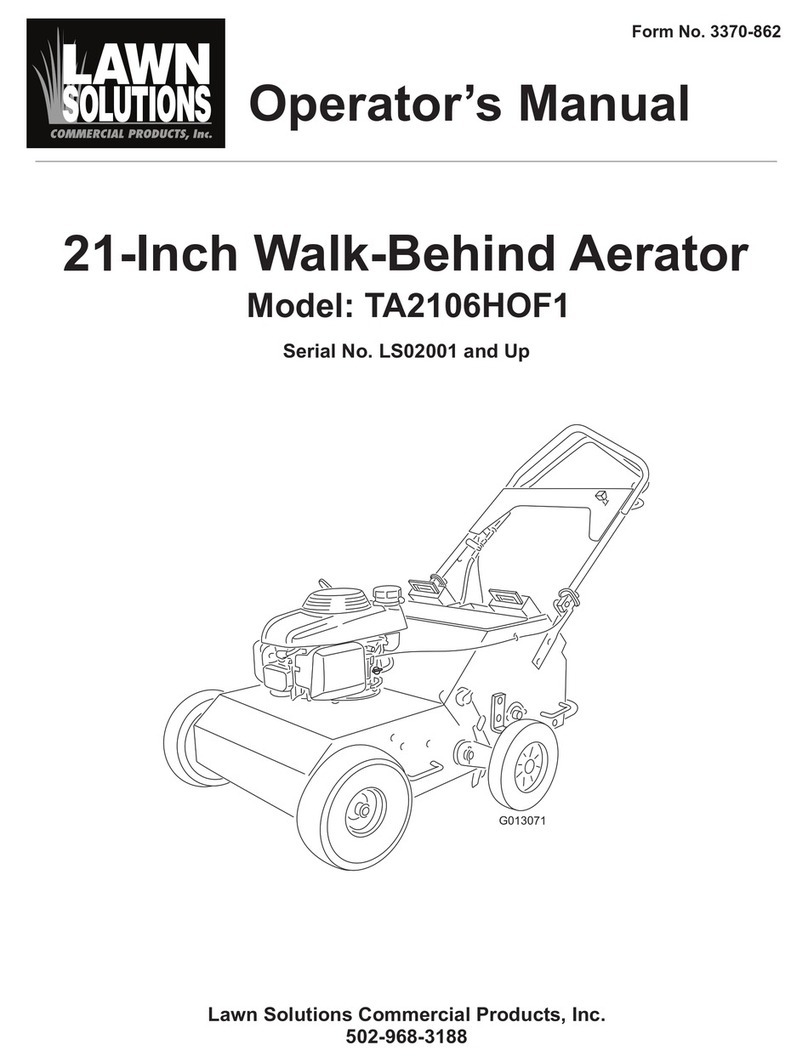
Operation
Operating engine parts, especially the muffler,
become extremely hot. Severe burns can occur
on contact and debris, such as leaves, grass,
brush, etc. can catch fire.
Allow engine parts, especially the muffler,
to cool before touching.
Remove accumulated debris from muffler
and engine area.
Install and maintain in working order a
spark arrester before using equipment on
forest-covered, grass-covered, or brush-
covered unimproved land.
Engine exhaust contains carbon monoxide,
which is an odorless deadly poison that can
kill you.
Do Not run engine indoors or in a small
confined area where dangerous carbon
monoxide fumes can collect.
Operate only in daylight or good artificial
light, keeping away from holes and hidden
hazards.
Be sure all drives are in neutral and parking
brake is engage before starting engine.
Never operate the machine with damaged
guards, shields, or covers. Always have safety
shields, guards, switches and other devices in
place and in proper working condition.
Do Not change the engine governor setting or
overspeed the engine.
Park machine on level ground. Stop engine,
wait for all moving parts to stop, remove key
and engage parking brake:
-Before checking, cleaning or working on
the machine.
-After striking a foreign object or abnormal
vibration occurs (inspect the machine for
damage and make repairs before restarting
and operating the machine).
-Before clearing blockages.
-Whenever you leave the machine.
Stop engine, wait for all moving parts to stop,
and engage parking brake:
-Before refueling.
Hands, feet, hair, clothing, or accessories
can become entangled in rotating parts.
Contact with the rotating parts can cause
traumatic amputation or severe lacerations.
Do Not operate the machine without
guards, shields, and safety devices in
place and working properly.
Keep hands, feet, hair, jewelry, or
clothing away from rotating parts.
NEVER carry passengers. DO NOT operate
the machine when people, especially children,
or pets are in the area.
Be alert, slow down and use caution when
making turns. Look behind and to the side
before changing directions.
Raise the tines, slow down, and use caution
when crossing surfaces other than grass and
when transporting the machine to and from the
work area.
Do Not operate the machine under the
influence of alcohol or drugs.
Use extreme care when loading or unloading
the machine into a trailer or truck.
Use care when approaching blind corners,
shrubs, trees, or other objects that may obscure
vision.
Slope Operation
Use Extreme caution when aerating and/or
turning on slopes as loss of traction and/or tip-
over could occur. The operator is responsible for
safe operation on slopes.






























